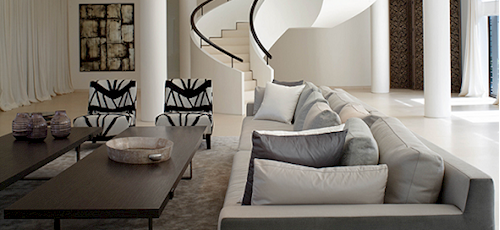Furniture
The term ‘furniture’ refers to moveable objects that are used to support human activities in the built environment. However, it can also be used more widely to refer to fitted objects and equipment.
Furniture tends to be of a craft-based design type that can be functional, decorative, symbolic, ceremonial, and so on. Many different materials are used in the manufacture of furniture, most commonly; timber, metal, plastic, fabrics, leather, and so on.
Furniture is subject to frequent changes in fashion, and tastes for furniture can vary widely from person to person.
Some of the main types of furniture include:
- Furniture for sitting: Chairs, stools, sofas, futons, etc.
- Furniture for eating or working: Tables, desks, etc.
- Furniture for sleeping: Beds, cots, bunks, etc.
- Furniture for storage: chests, wardrobes, etc.
- Garden furniture: Chairs, tables, etc.
- Street furniture: Benches, barriers, street lamps, traffic lights, bollards, etc.
Furniture can be grouped together with other components as 'FF&E' (furniture, fixture and equipment). FF&E might be procured separately to the main construction contract (or elements of them), particularly by clients that already have systems in place for procuring fixed and loose furniture, fittings and equipment; for example, schools, universities, or hospitals. For more information, see Furniture fixtures and equipment FF&E.
Interior designers are often associated with specifying furniture, analysing how a space is to be used and how best it can be planned with the most appropriate objects, considering functionality, aesthetic, space efficiency, circulation requirements, and so on. For more information, see Interior design
The Furniture and Furnishings (Fire Safety) Regulations define requirements for the fire resistance for domestic upholstered furniture, furnishings and other products containing upholstery. These Regulations are enforced by Trading Standards.
[edit] Related articles on Designing Buildings
Featured articles and news
Latest Build UK Building Safety Regime explainer published
Key elements in one short, now updated document.
UKGBC launch the UK Climate Resilience Roadmap
First guidance of its kind on direct climate impacts for the built environment and how it can adapt.
CLC Health, Safety and Wellbeing Strategy 2025
Launched by the Minister for Industry to look at fatalities on site, improving mental health and other issues.
One of the most impressive Victorian architects. Book review.
Common Assessment Standard now with building safety
New CAS update now includes mandatory building safety questions.
RTPI leader to become new CIOB Chief Executive Officer
Dr Victoria Hills MRTPI, FICE to take over after Caroline Gumble’s departure.
Social and affordable housing, a long term plan for delivery
The “Delivering a Decade of Renewal for Social and Affordable Housing” strategy sets out future path.
A change to adoptive architecture
Effects of global weather warming on architectural detailing, material choice and human interaction.
The proposed publicly owned and backed subsidiary of Homes England, to facilitate new homes.
How big is the problem and what can we do to mitigate the effects?
Overheating guidance and tools for building designers
A number of cool guides to help with the heat.
The UK's Modern Industrial Strategy: A 10 year plan
Previous consultation criticism, current key elements and general support with some persisting reservations.
Building Safety Regulator reforms
New roles, new staff and a new fast track service pave the way for a single construction regulator.
Architectural Technologist CPDs and Communications
CIAT CPD… and how you can do it!
Cooling centres and cool spaces
Managing extreme heat in cities by directing the public to places for heat stress relief and water sources.
Winter gardens: A brief history and warm variations
Extending the season with glass in different forms and terms.
Restoring Great Yarmouth's Winter Gardens
Transforming one of the least sustainable constructions imaginable.
























Comments
[edit] To make a comment about this article, or to suggest changes, click 'Add a comment' above. Separate your comments from any existing comments by inserting a horizontal line.